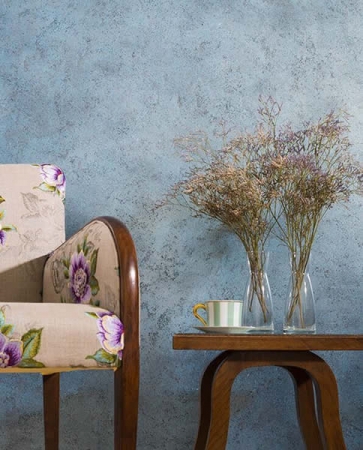
Whether you are planning on having a new home built or if you are remodeling your current house, you would want to have an interior that is tied together in beautiful harmony.
One great way to do that is to match the interior decorative paints for the walls with your home's decorative flooring.
The role of color
Color is an integral component of harmonious interior design. Homeowners and their contractors should always be mindful of the effects specific colors bring. For example, some colors can make a room appear bigger, while others can make the same room cozier.
In interior design, the general rule of thumb is that light colors are used to create the illusion of space, opening up the room. Dark colors, on the other hand, are used when the residents want to make a room appear smaller.
It is also worthwhile to mention that some colors and patterns are better suited for certain rooms.
A few preliminaries
When choosing colors to use for floors and walls, the best place to start would be with the floors. In most homes, the flooring is rarely changed or modified. Furthermore, the floor takes up the most space, in terms of both virtual and actual space.
Consider the dominant color of the floor, as well as accents and undertones if you have hardwood flooring at home. It is best to look for the less dominant colors on the floor as these will help you better choose your palette.
Another interior design concept you should be aware of is the color wheel. If your goal is to create a bold, dramatic feel for your living room, you should use complementary colors or colors that are the opposite of one another when you look at the color wheel. On the other hand, if you want something more subtle, consider using colors that are next to each other in the color wheel.
In choosing a wall color, it is best to choose one that is the least dominant in the room. You can make a decision based on the color of the flooring or the furniture already inside the living room.
Now that you have chosen the colors of the flooring and walls, you can round off the look of your living room through the use of furniture and accents.
If you are planning on using wooden furniture for your living room, look for pieces with wood grain that subtly match the colors of the walls and floor. On the other hand, if you are eyeing furniture with fabrics, choose colors that are close to the ones on your floor and walls, but a shade lighter or darker.
Adding accents can be a bit tricky. On the one hand, you want to have something that attracts attention. And on the other hand, your chosen accent should tie back to the overall theme of the living room.
Don't forget to take into consideration the height of the ceiling in your living room. A ceiling with a color lighter than the walls can appear higher, while darker hues on the ceiling can make a room look and feel smaller.
Another factor that is often overlooked when choosing colors for the walls and floors is the lighting. Do note that the effect of lighting in a room will change throughout the day, reflecting the amount of natural light that comes in as well as the artificial lighting that you use. Before settling for a palette, it is highly recommended that you take pictures of the room at different times of the day.
Color combos to consider
Monochrome
A monochromatic color scheme is ideal for bathrooms, kitchens, and living rooms, imbuing these rooms with simplicity and subtle elegance.
Light colors for walls, in particular, work perfectly well with brown floors. One benefit of this color combination is the ease of achieving the right balance in practically any room. Plus, finding furniture and decor that match this combination is a breeze.
Dark floor, light walls
The combination of dark color for flooring and light colors for both the walls and ceilings provides any room, including your living room with a light and airy ambiance.
If you are going for a minimalist look, pairing a dark-colored floor with light-colored walls allows you to achieve your desired vision without relying too much on other visual elements. You can tie up the overall look of the room by using furniture with light-colored fabrics.
Strong contrasts
If your living room has a high ceiling, you can generate interest by combining a dark-colored ceiling with walls with lighter hues.
On the other hand, if you have a smaller living room, the use of dark colors for the ceilings can add depth to the ceiling, provided that you use white molding to tie the visual elements together.
Other contrasting color schemes that you might want to consider are the pairing of light colors for the walls and ceiling and dark colors for the flooring or the opposite which uses dark hues for the walls and light colors for the ceiling and floors.
Do remember that these are merely suggestions. At the end of the day, you have to decide which of these combinations work best to achieve the look you envision for your living room.
Want to get more helpful tips? Read our other blog posts for more information on everything paint-related.
